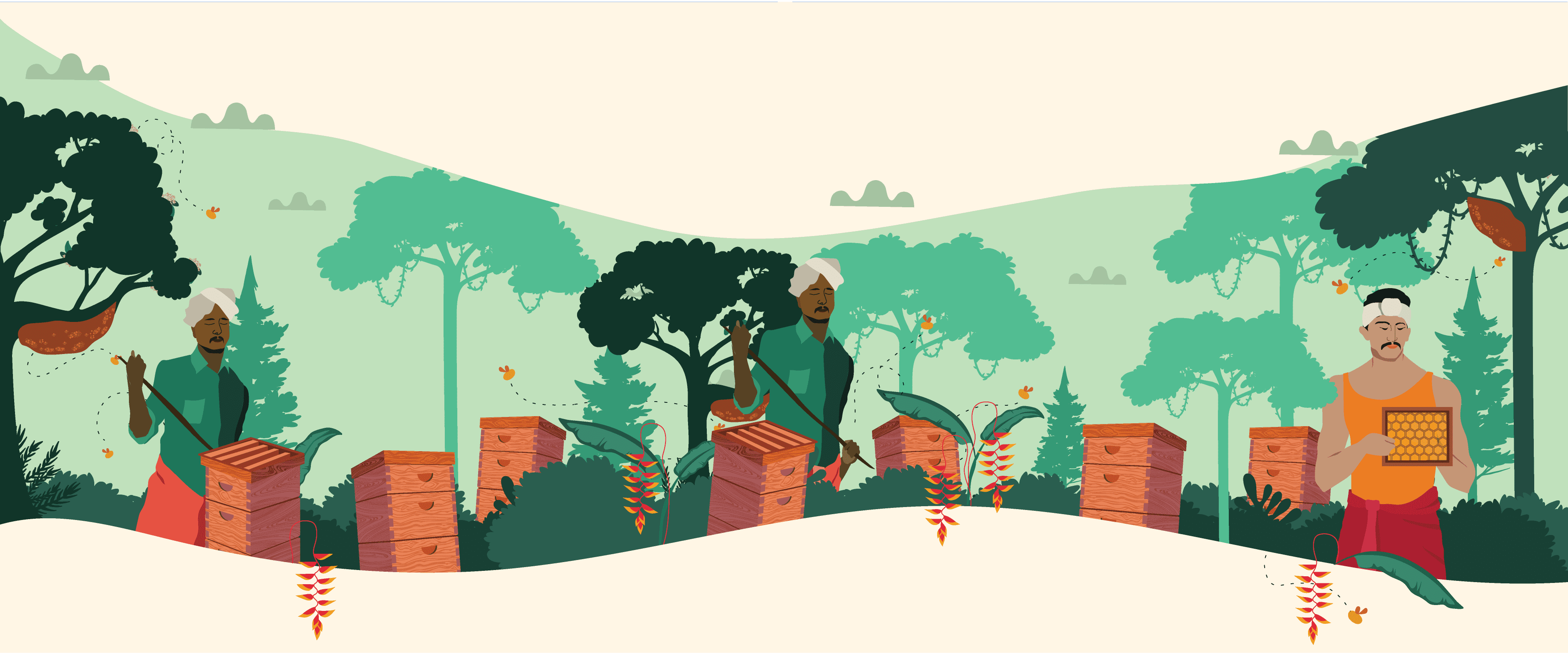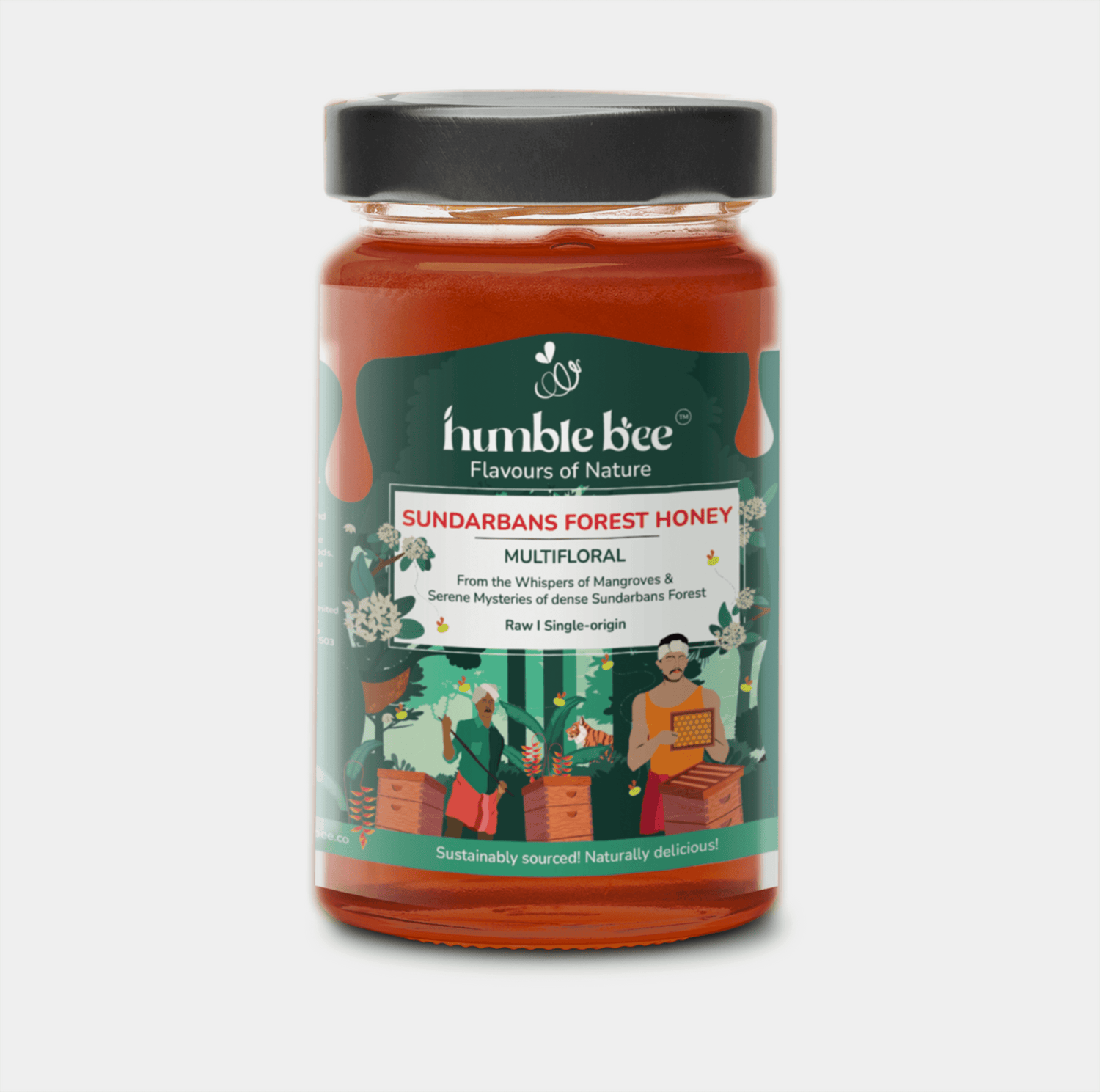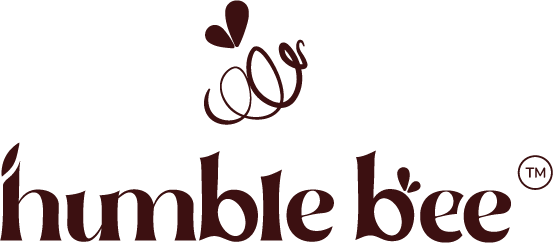





Glossary of Honey 🐝
Empowering You to Make Informed and Delightful Food Choices
"The food you eat can either be the safest and most powerful form of medicine or the slowest form of poison." - Ann Wigmore
In a world where food choices can be overwhelming and sometimes uncertain, understanding the nuances of what we consume is essential for making informed decisions. We invite you to embark on a journey into the language of pure and authentic honey, for making informed food choices and conscious consumption, nourishing both our bodies and the world around us.

Collapsible content
Raw Vs Processed Honey
Raw honey is the pure, unprocessed honey collected directly from the beehive. It undergoes minimal filtration, retaining all the natural goodness gifted by the bees and flowers. It has rich nutritional profile, enzymes, unique flavors and aromatic notes, reflecting the diverse flora bees have foraged upon.
Processed honey undergoes extensive filtration and pasteurization, altering its natural composition and robbing it of some beneficial properties. The heating process involved in pasteurization kills beneficial enzymes and reduces the honey's nutritional value. Some processed honey may have additives like artificial sweeteners or preservatives.
Raw honey shines as the superior choice due to its nutritional potency, live enzymes symbolizing bees' hard work, and an authentic and wholesome flavor. By choosing raw honey, you embrace a connection to the bees, their hives, and the beautiful flowers that paint the landscape.
Filtered Vs Unfiltered Honey
Filtered Honey undergoes a fine single/double straining process with muslin to achieve a smooth and clear appearance, making it easy to pour and spread. This process removes certain particles, impurities, sediments, wax, pollen and propolis, resulting in a product that is less likely to have residues or floating particles.
Unfiltered Honey, on the other hand, is not subject to fine straining and contains traces of bee pollen, beeswax and propolis, giving it a slighly cloudly appearance.
Both types of honey can be enjoyed and appreciated for their unique qualities.
Monofloral Vs Multifloral Honey
Monofloral Honey is made by bees foraging on the nectar of a specific flower species spread over acres of land, resulting in a distinct and characteristic flavor profile. Its flavour is naturally influenced by the dominant floral source, offering a specific taste and aroma.
Multifloral Honey is made by bees feeding on nectar of various flowers in their foraging range, creating a symphony of flavors and fragrances. The diverse nectar sources contribute to a rich and nuanced taste, unique to each batch of multifloral honey.
Whether you like to savor the specific floral essence and subtleties offered by monofloral honey or enjoy the harmonious blend of flavors of multifloral honey, choose the one that resonates with your taste preferences.
Pure Vs Natural Honey
Pure honey is extracted directly from the beehives and remains unaltered, free from any additives, sweeteners, colors, or preservatives. While it may include nectar sourced from flowers, it may also come from alternative nectar sources, such as sugar syrup or other natural sources.
Natural honey, on the other hand, specifically refers to honey that bees produce by foraging out in the natural environment, collecting nectar from various flowers. The defining characteristic of natural honey is that it comes solely from the nectar of flowers, without any artificial additives or human intervention, such as sugar syrup feeding.
Natural Honey exemplifies the harmonious relationship between bees and their environment, showcasing the authentic taste of the flowers the bees have visited.
Honey Extracted from Super chamber Vs from Brood chamber
Based on the design, a bee box can have one, two, or three chambers. The topmost chamber is called the Super Chamber, and the bottommost is called the Brood Chamber. The brood chamber serves as the hive's primary living area, where the queen lays eggs, and the young bees develop. In the super chamber, bees store the excess honey produced, which is primarily meant to feed the colony during periods of scarcity or winter. Bees fan and dry the nectar in the super chamber, reducing its moisture content to prevent mold formation, and then seal it with their own wax secretion.
The honey kept by bees in the brood chamber is primarily intended to feed the larvae, and it has high moisture/water content, remaining uncapped. Often, when beekeepers extract honey from the brood chamber, several larvae and eggs get killed, and along with them, the waste matter of bees gets mixed with the honey. Since the honey is uncapped and has high moisture content, it needs filtration and pasteurization before it is rendered consumption-ready.
Single-origin Vs Blended Honey
Single-origin honey comes from the nectar of flowers from a specific geographic location, celebrating the essence of a particular region. Each batch carries the distinct characteristics of the flowers the bees visited, creating an extraordinary honey experience.
Blended honey, on the other hand, is crafted by combining various honey sources.
In essence, single-origin honey offers a pure and exclusive experience, celebrating the identity of a specific region and its floral richness.
Naturally flavored Vs Infused Honey
Naturally flavored honey derives its exquisite taste solely from the diverse floral sources visited by bees during their nectar-gathering expeditions. Each jar boasts distinct floral notes, allowing you to savor the richness of various flower varieties that bloom in the honey's place of origin.
Infused honey, on the other hand, is made by artfully infusing ingredients like herbs, spices, fruits, or botanicals into the pure honey base.
Adulterated vs Unadulterated Honey
Unadulterated honey is how bees and nature intend the honey to be, free from any artificial additives, sweeteners, colors, or preservatives, untainted by human interference, and rich in authentic flavor. Unadulterated honey retains its natural enzymes, vitamins, and minerals, delivering genuine nourishment for your well-being.
Adulterated honey is tainted with artificial additives and impurities to mimic the appearance of pure honey. It is often mixed with corn syrup, sugarcane syrup, or other cheap sweeteners to dilute its quality. Consuming adulterated honey may lead to health concerns.
Make an informed choice by recognizing the genuine purity of unadulterated honey and safeguarding your honey experience from deceptive imitations.
Other key terms you must know 🍯
Crystallization
Crystallization is a natural process that occurs in raw honey over time. Crystallized honey is a mark of authenticity of honey and doesn't indicate spoilage or adulteration. It also does not affect its quality or nutritional value. Many people prefer crystallized honey because it is creamier, easier to spread and has a thicker texture than liquid honey.
Raw, pure and unfiltered honey contains traces of pollen and beeswax which enhances the process of crystallization.
It happens due to various factors like the flower source, glucose-fructose ratio, moisture content, and the presence of pollen and beeswax.
Different types of honey crystallize at different rates, showcasing their unique floral origins. Honey collected from oil plants such as mustard, sunflower, and coriander tends to crystallize faster than others.
Another key reason for crystallization is (f/g) fructose/glucose and the (g/w) glucose/water ratio. If honey has high f/g and low g/w, then it will slow down crystallization. If honey contains more glucose than fructose it will readily be crystallized. And hence Mustard honey crystallizes sooner than Acacia Honey.
To prevent crystallization in the first place, store honey in a cool, dry place away from direct sunlight.
If your honey has already crystallized, try to use it up within a few months to ensure the best flavor and texture.
To restore crystallized honey to its liquid form, place the jar of honey in a bowl of warm water (not boiling) and stir it occasionally until the crystals dissolve. Avoid using high heat or microwave, as this can damage the natural enzymes and other beneficial compounds in the honey. Repeated heating and cooling can damage the quality of honey and affect its taste and texture.
Pasteurization OR Distillation OR Processing
Pasteurization is a common practice in the honey industry, aimed at extending shelf life and ensuring uniformity in texture and appearance. While it may provide certain benefits, it also has drawbacks that can impact the natural goodness of honey. Pasteurization involves heating honey to high temperatures (50-60°C) to reduce moisture and prevent fermentation. This process extends the honey's shelf life and delays crystallization, giving it a smooth and consistent texture.
Brands opt for pasteurization to meet market demands for standardized honey products. Pasteurized honey remains liquid for longer, making it visually appealing on store shelves.
Unfortunately, pasteurization comes with trade-offs. The high heat destroys beneficial enzymes, antioxidants, and natural flavors present in raw honey, compromising its nutritional value. Additionally, while pasteurization can prevent fermentation, but it also reduces the honey's ability to retain certain health benefits associated with naturally fermented honey.
At Humble Bee Honey, we choose to offer raw, unprocessed honey. We believe in preserving the authenticity of nature's gift, celebrating the unique characteristics of each honey variety. Raw honey, with its crystallization and occasional imperfections, showcases the genuine essence of different floral sources.
Traceability
In a world where honey stands as one of the most adulterated products, traceability becomes a beacon of trust and authenticity. Traceability empowers you with the knowledge of where your honey comes from, the region it hails from, and the ethical practices employed in its production. Traceability is not just about knowing where your honey comes from; it's about supporting small beekeepers and ethical beekeeping practices.
At Humble Bee Honey, we understand the importance of transparency. We believe that every jar of honey should come with a story—one that celebrates the unique floral origins, the hard work of small beekeepers, and the biodiversity of our diverse regions. By choosing Humble Bee Honey, you uplift local beekeeping communities, contributing to sustainable livelihoods and preserving our precious ecosystems. Simply scan the QR code on our honey jar, and you'll uncover the story behind your honey—its floral origins, the region it comes from, and the beekeepers who nurtured the bees.
Join us in savoring the authentic flavors of nature, handcrafted by small beekeepers who nurture their bees with care. Let's champion traceability together, for a future where every honey lover can confidently say, "I know where my honey comes from."
Ethical Beekeeping
At Humble Bee Honey, ethical beekeeping lies at the core of our values. We believe that bees are not just honey producers; they are vital pollinators, essential to maintaining the delicate balance of our ecosystems.
Our approach to ethical beekeeping begins with the extraction of honey from the super chamber—where bees store their excess honey, carefully sealed with their own wax secretion. By harvesting only from the super chamber, we ensure that the bees have enough honey for their sustenance and thriving colonies. We avoid practices that may disrupt their natural behavior, ensuring the well-being of both the bees and the flora they pollinate.
As advocates of ethical beekeeping, we work hand in hand with small beekeepers, empowering them with knowledge and sustainable practices and precision tools. Pollinators, like bees, play a pivotal role in our food production. Through ethical beekeeping, we commit to preserving their habitats, safeguarding biodiversity, and contributing to the health of our planet. We believe in transparency and invite you to witness the journey of your honey—traceable from hive to table.
Fructose AND Glucose
Honey is not just a simple sweetener; it's a masterpiece of chemistry- Fructose and Glucose are the two primary sugars found in honey. Each plays a crucial role in defining the taste, texture, and crystallization properties of this delightful nectar.
Fructose adds a delicate sweetness to honey and gives it that golden color. Beyond its taste, fructose provides a steady and lasting source of energy, making honey an excellent natural fuel for endurance.
Glucose offers an instant energy boost upon consuming honey, revitalizing body and mind. It gets quickly absorbed, replenishing energy levels. Together, fructose and glucose create a balanced sweetness, giving honey its unique texture and slow crystallization process.
At Humble Bee Honey, we celebrate the perfect blend of fructose and glucose in our honey, sourced from the finest places.
Moisture content of Honey
Moisture content plays a vital role in defining honey's quality and characteristics. In its purest form, honey contains only about 17-20% moisture, a precise balance that ensures its longevity and exceptional taste. Too much moisture can lead to fermentation or spoilage, while too little can cause crystallization.
When it comes to honey extracted from the brood chamber, excessive moisture content can be a concern. Majority of brands and producers resort to pasteurisation, a heating process aimed at reducing moisture levels, but this approach comes at a significant cost. This process compromises with the very essence of honey, eliminating essential enzymes, antioxidants, and nutrients that make honey a true superfood.
Our beekeepers diligently and exclusively extract honey from the capped cells of the super chambers, where the moisture content is just right and the honey's nutritional value is preserved in its purest form. We avoid pasteurisation to ensure that every jar of honey retains its natural goodness and unparalleled health benefits.
Pollen, Wax, Propolis and other byproducts of beekeeping
Beyond the golden honey lies a treasure trove of wonderful products crafted by the industrious bees in the hives.
Pollen
Pollen, the tiny dust-like particles collected by bees as they forage, is a nutritional powerhouse rich in vitamins, minerals, and protein. For humans, pollen is considered a superfood with potential health benefits. It is believed to support immune function, boost energy levels, and aid in overall well-being. Many people incorporate pollen into their diet as a dietary supplement or as a natural remedy for various health conditions.
BeesWax
Beeswax, a product of the bees' extraordinary craftsmanship, is not only the building block of their hives but also a valuable resource for humans. Beeswax is widely used in various industries, including cosmetics, skincare, and candle-making. It serves as a safe and sustainable alternative to synthetic waxes and chemical-based products. Beeswax candles burn cleaner and longer, emitting a gentle honey aroma, and beeswax-based skincare products offer moisturizing and protective benefits.
Propolis
Propolis is a natural resinous substance with powerful antimicrobial, antifungal, and antiviral properties. Bees collect it from tree buds and use it to seal and protect their hives from external threats. Propolis has been used for centuries as a natural remedy for various ailments. It is often included in natural supplements, tinctures, and topical products to support the immune system, promote wound healing, and soothe oral health issues.
Royal Jelly
Royal Jelly is a unique secretion produced by worker bees for the nourishment of the queen bee. It contains essential nutrients, including proteins, vitamins, and fatty acids, that support the queen's long lifespan and reproductive abilities. Royal Jelly is highly regarded in natural health circles for its potential benefits. It is believed to promote skin health, boost vitality, and support hormonal balance. As a supplement, royal jelly is often taken for its rejuvenating properties and overall wellness support.
Bee Venom
Bee venom is a complex mixture of enzymes, peptides, and proteins with potential therapeutic effects. In nature, bees use venom as a defense mechanism against predators. Bee venom therapy (BVT) or Apitherapy involves controlled administration of bee stings and has been explored for various health conditions, such as arthritis and inflammation. While research is ongoing, some individuals believe that BVT may offer pain relief and improve certain health conditions.
From pollen to propolis, beeswax to royal jelly, every byproduct of beekeeping holds a unique story and a plethora of benefits for you to discover.



Beyond Sweetness: A Commitment to Ethics, Empowerment and Ecosystem
Humble Bee Honey represents more than just sweetness—it symbolizes our unwavering dedication to ethical practices, empowering beekeepers and sustaining the ecosystem.



